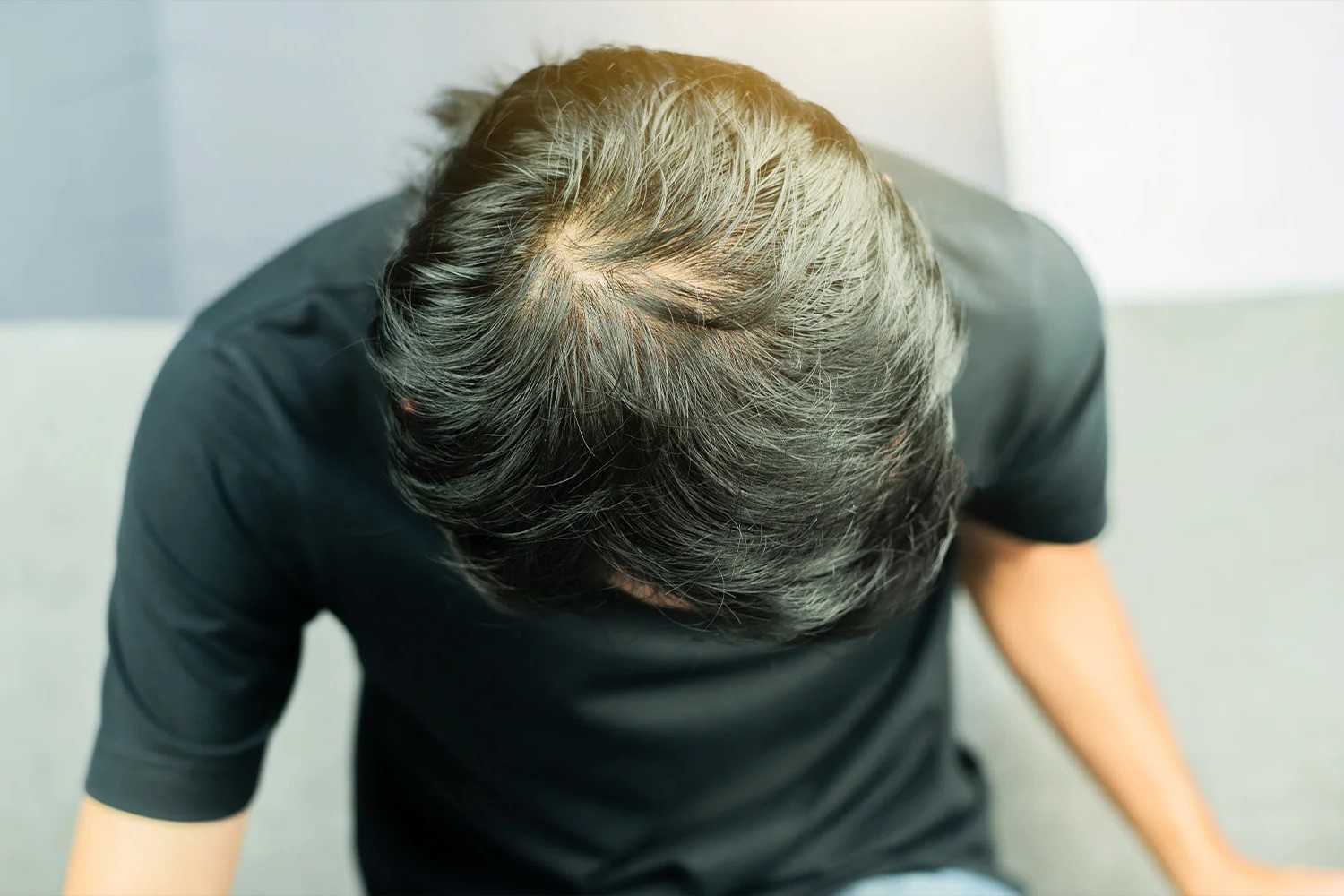Home>Health and Wellness>How To Get Rid Of A Crick In Your Neck


Health and Wellness
How To Get Rid Of A Crick In Your Neck
Published: March 3, 2024
Learn effective methods to relieve a crick in your neck and improve your health and wellness. Find simple tips to alleviate discomfort and prevent future issues.
(Many of the links in this article redirect to a specific reviewed product. Your purchase of these products through affiliate links helps to generate commission for Noodls.com, at no extra cost. Learn more)
Table of Contents
Introduction
Dealing with a crick in your neck can be a real pain in the neck, quite literally. Whether it's from sleeping in an awkward position, poor posture, or sudden movements, a crick in the neck can cause discomfort and limit your range of motion. However, there's no need to let a crick in your neck slow you down. With the right approach, you can alleviate the discomfort and get back to feeling like yourself again.
In this comprehensive guide, we'll explore the various causes of a crick in your neck, practical tips for finding relief, and effective exercises and stretches to help ease the discomfort. Additionally, we'll discuss when it's necessary to seek medical attention for a crick in your neck. By the end of this article, you'll have a thorough understanding of how to address and prevent this common ailment, empowering you to take proactive steps toward better neck health.
So, if you've ever found yourself wincing in pain due to a crick in your neck, you're in the right place. Let's dive into the details and discover how to bid farewell to that pesky crick and embrace a more comfortable and flexible neck.
Read more: How To Get Rid Of Neck Hump
Understanding the causes of a crick in your neck
A crick in the neck, often referred to as a stiff neck, can be a result of various factors, each contributing to the discomfort and limited mobility experienced. One common cause is poor sleeping posture. Sleeping in an awkward position can strain the neck muscles, leading to stiffness and discomfort upon waking. Additionally, sudden movements or jerking the neck during sleep can also result in a crick.
Another prevalent cause of a crick in the neck is poor posture during daily activities. Whether it's hunching over a computer for extended periods, cradling a phone between the ear and shoulder, or slouching while seated, these habits can place undue stress on the neck muscles, leading to stiffness and discomfort.
Furthermore, engaging in activities that involve repetitive or prolonged neck movements, such as painting a ceiling or playing a musical instrument, can strain the neck muscles and contribute to the development of a crick. Additionally, sudden impacts or jolts, such as those experienced during a car accident or a fall, can result in a crick due to the abrupt force exerted on the neck.
Moreover, stress and tension can manifest physically in the form of a crick in the neck. When under stress, individuals may unconsciously tense their neck and shoulder muscles, leading to stiffness and discomfort. Emotional stress can also contribute to muscle tension, exacerbating the likelihood of experiencing a crick in the neck.
In some cases, underlying medical conditions, such as cervical spondylosis or osteoarthritis, can contribute to the development of a crick in the neck. These conditions may lead to degeneration of the cervical spine, resulting in stiffness and discomfort in the neck area.
Understanding the various causes of a crick in the neck is essential for implementing preventive measures and addressing the discomfort effectively. By recognizing the factors that contribute to this common ailment, individuals can take proactive steps to minimize the risk of experiencing a crick and promote overall neck health.
Tips for relieving a crick in your neck
Dealing with a crick in your neck can be incredibly uncomfortable, but there are several practical tips that can help alleviate the discomfort and promote healing. Here are some effective strategies to relieve a crick in your neck:
-
Apply Heat or Cold Therapy: Both heat and cold therapy can provide relief for a crick in the neck. Applying a heating pad or a warm compress to the affected area can help relax the muscles and improve blood flow, reducing stiffness and discomfort. Conversely, using an ice pack or a cold compress can help reduce inflammation and numb the area, providing relief from pain.
-
Gentle Neck Stretches: Engaging in gentle neck stretches can help alleviate the stiffness associated with a crick. Slowly tilting your head from side to side, as well as gently rotating your neck in both directions, can help loosen the muscles and improve flexibility. It's important to perform these stretches slowly and carefully to avoid exacerbating the discomfort.
-
Maintain Good Posture: Practicing good posture is crucial for relieving and preventing a crick in the neck. Whether sitting at a desk, standing, or walking, maintaining proper alignment of the spine and neck can reduce strain on the muscles and promote overall neck health.
-
Use a Supportive Pillow: Investing in a supportive pillow that aligns with your sleeping position can significantly reduce the likelihood of experiencing a crick in your neck. A pillow that provides adequate support for the neck and promotes proper spinal alignment can help prevent strain and discomfort during sleep.
-
Over-the-Counter Pain Relief: Over-the-counter pain medications, such as ibuprofen or acetaminophen, can help alleviate the pain and discomfort associated with a crick in the neck. It's important to follow the recommended dosage and guidelines provided by the medication's packaging or a healthcare professional.
-
Avoid Prolonged Neck Strain: Minimizing activities that place prolonged strain on the neck, such as excessive phone use or prolonged periods of looking down at a screen, can help prevent the development of a crick. Taking regular breaks and practicing neck relaxation exercises can alleviate tension and reduce the risk of experiencing discomfort.
By incorporating these tips into your daily routine, you can effectively relieve a crick in your neck and promote long-term neck health. It's essential to listen to your body and seek medical attention if the discomfort persists or worsens. With the right approach, you can bid farewell to that pesky crick and embrace a more comfortable and flexible neck.
Exercises and stretches to help alleviate a crick in your neck
Engaging in targeted exercises and stretches can play a pivotal role in alleviating a crick in your neck and promoting flexibility and strength in the affected area. These activities can help relax tense muscles, improve range of motion, and reduce discomfort. It's important to perform these exercises and stretches gently and mindfully, avoiding any movements that exacerbate the discomfort. Here are some effective exercises and stretches to help alleviate a crick in your neck:
-
Neck Tilts: Sit or stand in a comfortable position with your spine aligned. Slowly tilt your head to one side, bringing your ear towards your shoulder while keeping your shoulders relaxed. Hold the stretch for 15-30 seconds, feeling the gentle stretch along the side of your neck. Repeat on the other side. Perform 2-3 sets on each side.
-
Neck Rotation: Begin by facing forward with your shoulders relaxed. Slowly turn your head to one side, aiming to bring your chin over your shoulder. Hold the position for 15-30 seconds, feeling the stretch in the opposite side of your neck. Return to the center and repeat on the other side. Perform 2-3 sets on each side.
-
Neck Retraction: Sit or stand with your spine in a neutral position. Gently tuck your chin in towards your neck, creating a double chin appearance. Hold this position for 5-10 seconds, feeling the stretch at the base of your skull. Release and repeat for 10-15 repetitions.
-
Shoulder Blade Squeezes: Sit up straight and gently squeeze your shoulder blades together, as if trying to hold a pencil between them. Hold the squeeze for 5-10 seconds, then release. Repeat for 10-15 repetitions, focusing on maintaining proper posture throughout the exercise.
-
Upper Trapezius Stretch: Sit or stand tall and gently grasp the bottom of your chair with one hand. Tilt your head to the opposite side, bringing your ear towards your shoulder. Use your free hand to gently apply additional pressure, deepening the stretch along the side of your neck. Hold for 15-30 seconds and repeat on the other side.
Incorporating these exercises and stretches into your daily routine can help alleviate a crick in your neck and prevent future discomfort. It's important to perform these movements mindfully, listening to your body and avoiding any motions that cause pain. Additionally, maintaining good posture and taking regular breaks from activities that strain the neck can further support the effectiveness of these exercises. If the discomfort persists or worsens, it's advisable to seek guidance from a healthcare professional to address the underlying cause and receive personalized recommendations for relief.
When to seek medical attention for a crick in your neck
While many cases of a crick in the neck can be effectively managed with home remedies and self-care measures, there are instances where seeking medical attention is crucial for proper evaluation and treatment. It's important to be mindful of certain signs and symptoms that may indicate the need for medical intervention, ensuring that any underlying issues are addressed promptly.
If you experience persistent or worsening neck pain that does not improve with home remedies, it's advisable to consult a healthcare professional. Additionally, if the discomfort is accompanied by radiating pain, numbness, or tingling sensations that extend into the arms or hands, it may indicate nerve compression or other underlying conditions that require medical assessment.
Furthermore, if the crick in your neck is the result of a traumatic injury, such as a car accident or a fall, seeking medical attention is imperative. Traumatic incidents can lead to serious neck injuries, including whiplash or cervical spine fractures, which necessitate immediate evaluation by a healthcare provider.
In some cases, a crick in the neck may be accompanied by additional symptoms, such as fever, headache, dizziness, or difficulty swallowing. These associated symptoms can be indicative of underlying infections, inflammatory conditions, or other medical issues that require professional medical assessment and appropriate treatment.
Individuals with a history of neck or spine-related conditions, such as cervical spondylosis, osteoarthritis, or previous neck injuries, should be particularly vigilant about seeking medical attention for a crick in the neck. These pre-existing conditions can predispose individuals to complications and may necessitate specialized care to address the underlying cause of the discomfort.
Moreover, if the crick in your neck significantly impairs your ability to move your head, perform daily activities, or significantly impacts your quality of life, it's essential to seek medical evaluation. Healthcare professionals can conduct a thorough assessment, potentially including imaging studies, to identify the underlying cause of the discomfort and develop a tailored treatment plan to address the issue effectively.
In summary, while many cases of a crick in the neck can be managed with self-care measures, it's important to be mindful of certain warning signs that warrant medical attention. By promptly seeking professional evaluation when necessary, individuals can ensure that any underlying issues contributing to the discomfort are addressed appropriately, promoting optimal neck health and overall well-being.
Read more: How To Relieve A Crick In Your Neck
Conclusion
In conclusion, a crick in the neck can be a source of significant discomfort and limitation, impacting daily activities and overall well-being. However, by understanding the various causes of this common ailment and implementing practical strategies for relief, individuals can effectively address the discomfort and promote long-term neck health.
It's essential to recognize the role of preventive measures in minimizing the risk of experiencing a crick in the neck. Practicing good posture, maintaining proper spinal alignment during activities, and taking regular breaks from prolonged neck strain can significantly reduce the likelihood of developing discomfort in the neck area. Additionally, investing in a supportive pillow and creating a comfortable sleeping environment can contribute to preventing a crick caused by poor sleeping posture.
Furthermore, the incorporation of targeted exercises and stretches can play a pivotal role in alleviating a crick in the neck and promoting flexibility and strength in the affected area. Engaging in gentle neck tilts, rotations, and retraction exercises, along with shoulder blade squeezes and upper trapezius stretches, can help relax tense muscles and improve range of motion. By integrating these activities into a daily routine, individuals can proactively address discomfort and minimize the risk of future occurrences.
While self-care measures and home remedies can effectively manage many cases of a crick in the neck, it's crucial to be mindful of warning signs that indicate the need for medical attention. Persistent or worsening neck pain, accompanied by radiating symptoms, traumatic incidents, or associated systemic symptoms, warrants prompt evaluation by a healthcare professional. By seeking timely medical attention when necessary, individuals can ensure that any underlying issues contributing to the discomfort are addressed appropriately, promoting optimal neck health and overall well-being.
In essence, addressing a crick in the neck involves a multifaceted approach that encompasses preventive measures, targeted relief strategies, and the recognition of when professional evaluation is necessary. By empowering individuals with the knowledge and tools to address and prevent this common ailment, this guide aims to support individuals in embracing a more comfortable, flexible, and resilient neck, enabling them to navigate daily activities with ease and vitality.














